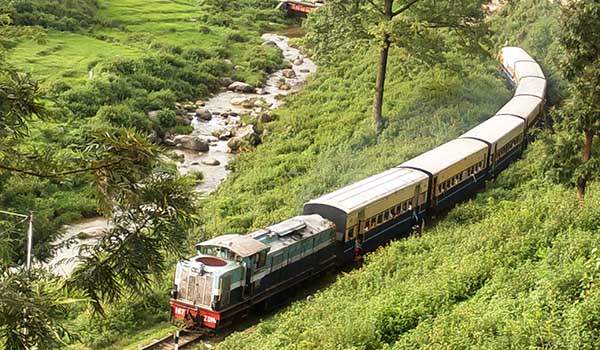 Kangra is located at a distance of 18 km from Dharamshala and is a popular tourism destination for various temples and Kangra fort. Kangra district is most populated district of Himachal Pradesh. It has an average elevation of 733 metres (2404 ft). The district of Kangra extends from the Jalandhar Doab far into the southern ranges of the Himalaya. Kangra is situated at the confluence of the Bener River and Majhi River. Beas river is also an important river here. Historically Kangra was known as Nagarkot and Trigarta, Kangra town was founded by Katoch Kshatriya Rajputs of Chandervanshi Lineage . The Katoch Rajas had a stronghold here with a fort and rich temples. Another ancient name of the city is Bhimagar and it was supposedly founded by Raja Bhim, younger brother of Kuru Emperor Yudhisthira of Indraprastha.
Kangra is located at a distance of 18 km from Dharamshala and is a popular tourism destination for various temples and Kangra fort. Kangra district is most populated district of Himachal Pradesh. It has an average elevation of 733 metres (2404 ft). The district of Kangra extends from the Jalandhar Doab far into the southern ranges of the Himalaya. Kangra is situated at the confluence of the Bener River and Majhi River. Beas river is also an important river here. Historically Kangra was known as Nagarkot and Trigarta, Kangra town was founded by Katoch Kshatriya Rajputs of Chandervanshi Lineage . The Katoch Rajas had a stronghold here with a fort and rich temples. Another ancient name of the city is Bhimagar and it was supposedly founded by Raja Bhim, younger brother of Kuru Emperor Yudhisthira of Indraprastha.
The temple of Vajreshwari Devi was one of the oldest and wealthiest in northern India. The temple and Kangra town were destroyed by earthquake on the 4 April 1905. Around 1339 lives were lost in this place at that time and about 20,000 elsewhere. In 1855 the headquarters of the district were moved to the cantonment of Dharamsala, which was established in 1849.
Mahmud of Ghazni took the fort in 1009 and from one of the temples carried off a vast treasure. In 1360 Kangra was again plundered by Feroz Shah Tughluq. After invading and occupying Kumaon and Garhwal in 1790, the Gurkhas invaded Kangra in 1806 and occupied it until the British took it back in 1815. The princely state of Kangra was merged in India in 1948 by the then titled Raja of Kangra-Lambagraon namely Raja Druv Dev Chand Katoch. It was part of composite Punjab till November 1966 when it got transferred to Himachal Pradesh.
Tea cultivation was introduced into Kangra valley about 1850. The Palampur fair, established by government with a view to fostering commerce with central Asia, attracts a small concourse of Yarkandi merchants. The Lahulis carry on an enterprising trade with Ladakh and countries beyond the frontier, by means of pack sheep and goats. Rice, tea, potatoes, opium, spices, wool and honey are the chief exports.
Kangra valley is one of the most picturesque, green and luxuriant valleys of lower Himalyas sheltered by the sublime Dhauladhar range.This one of the most important or famous district of Himachal Pradesh due to its popularity. Kangra is mainly famous for its natural beauty and tea gardens. Number of people’s visiting here every year. Many ancient temples like the Jawalaji Temple, Vajreshwari Devi temple, Chamunda Devi temple, chintapurni temple, Baba Baroh, Masroor Temple built by Pandvas and Baijnath temple are found here. One can also pay a visit to Gopalpur Nature Park in Gopalpur village and can also see tea gardens there. Kangra Fort is also a popular tourist attraction. Mcleodganj near Dharamshala is the home-in-exile to the Dalai Lama. “Bhagsunag temple” is there. Cricket ground of Dharamshala is also a major attraction because of its location and good quality pitch for players. Maharaja Sansar Chandra Museum adjoins the Kangra Fort. Available at the Museum are Audio guides for the Kangra Fort and the Museum.